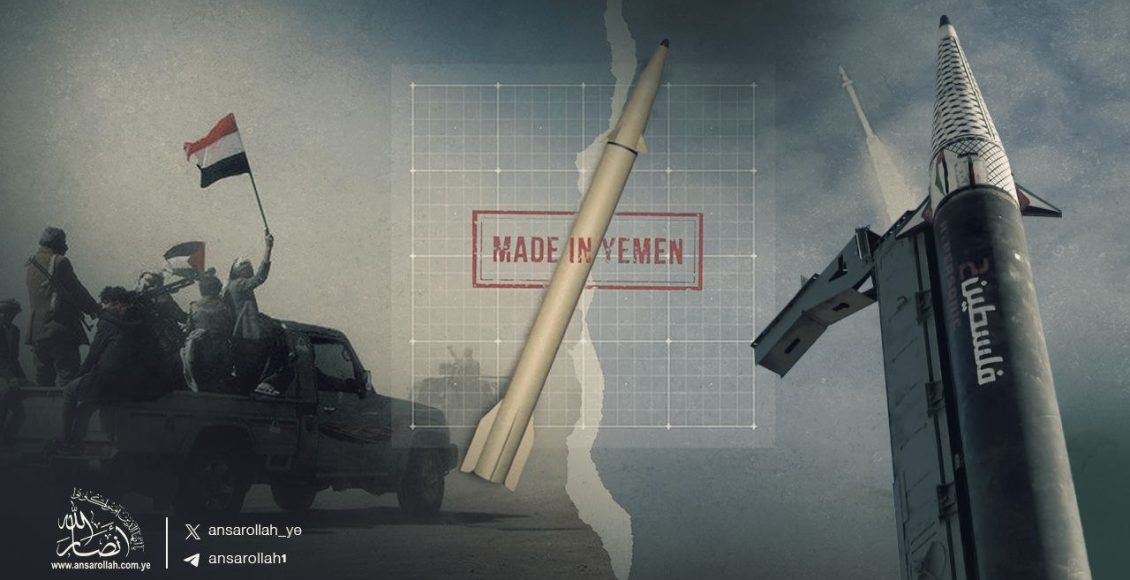While the enemy initially found space for denial since Sana’a had yet to make an official announcement, the threat of Yemen possessing this technology was already clear. This capability represents a critical blow to one of the key components of U.S. and Israeli military strategy in the conflict—advanced air defense systems. These systems form the backbone of the military superiority that both nations have worked tirelessly to maintain in the region.
The Shattering of Israeli Deterrence
The importance of this "defensive superiority" has been central to the enemy’s regional strategies, especially throughout this conflict. Confidence in their advanced air defense systems has been a major factor behind Israel’s aggressions against Iran, Yemen, Lebanon, and Syria. The enemy has relied on its defensive capabilities both within and outside the occupied territories, confident that it could minimize losses in any retaliatory strikes, based on its calculations of potential responses. While the prospect of total war remains distant, Israel seeks to preserve the image—however inaccurate—of being a well-protected entity.
The launch of the "Falasteen-2" hypersonic missile at occupied Yaffa "Tel Aviv", therefore, was not merely a significant momentary breach; it was a profound disruption to Israel’s (deterrence/protection) strategy. Military superiority is not a luxury; it is fundamental. This is why the Israeli army focused so heavily on denying Yemen’s possession of such technology rather than addressing the many questions surrounding its failure to detect and intercept the missile. Israel believes it still has room to maneuver if its population remains uncertain about Yemen’s hypersonic capabilities.
A military official speaking to a Zionsist newspaper Calcalist on the day of the operation underscored the magnitude of this development, stating, "If the missile is indeed hypersonic, this would signify a fundamental shift in the region." This statement points to the fact that the impact of this strike is not a minor disruption but a fundamental challenge to the core principles of regional military strategy. Yemen's possession of missiles capable of bypassing the defense networks formed by multiple countries, including all Israeli systems, represents a complete "deterrence" equation. This gives Sana’a the ability to implement strategies such as an "eye for an eye" on all levels and even execute preemptive strikes if necessary.
No Red Lines Left
This new equation, however, is not just about technology; it is about decision-making. Here lies a deeply unsettling detail for the enemy. The Yemeni support front has been characterized by an open-ended ceiling in its decision-making process. Launching a hypersonic missile into the heart of the Israeli entity is not constrained by distant political or military red lines that the enemy might attempt to manipulate. It is tied only to the availability of resources and the continuation of the genocide in Gaza. Therefore, the enemy cannot predict the scale or intensity of Yemeni strikes unless it has precise information about the extent of Yemen’s arsenal, which remains a "black hole," as one commander from the U.S. aircraft carrier group Eisenhower described it.
The missile strike came during a period of heightened defensive alert and marked the second such attack in two months. With no reliable intelligence to help the enemy assess the current state of Yemen's capabilities, and with the genocide in Gaza ongoing, the Yemeni front has now become an unprecedented strategic dilemma. This extends from fears of future successful strikes to concerns about the development of more lethal and accurate weapons, and even existential anxiety about the rise of a new force capable of striking "Israel" within 11 and a half minutes in retaliation for any aggression. Yemen, bold and unconstrained by political or diplomatic considerations, has demonstrated its willingness and ability to act, thus threatening the collapse of Israel’s image of military superiority—both materially and morally. Even efforts to maintain this image through manipulations hold no weight against Yemen, which initiated the bombing of "Tel Aviv" before Israeli jets even launched a direct attack.
Israeli researcher and journalist Yoni Ben-Menachem, commenting on the missile strike in an article for Epoch magazine, warned that the Israeli entity must exercise caution. He emphasized that Yemen’s armed forces are "dangerous, tenacious, and vengeful, having waged a continuous military struggle for years against Saudi Arabia and the UAE. They have even managed to cripple a large part of Saudi Arabia’s oil industry and cause significant economic damage through missile and drone attacks."
And now, this force possesses hypersonic missiles.







